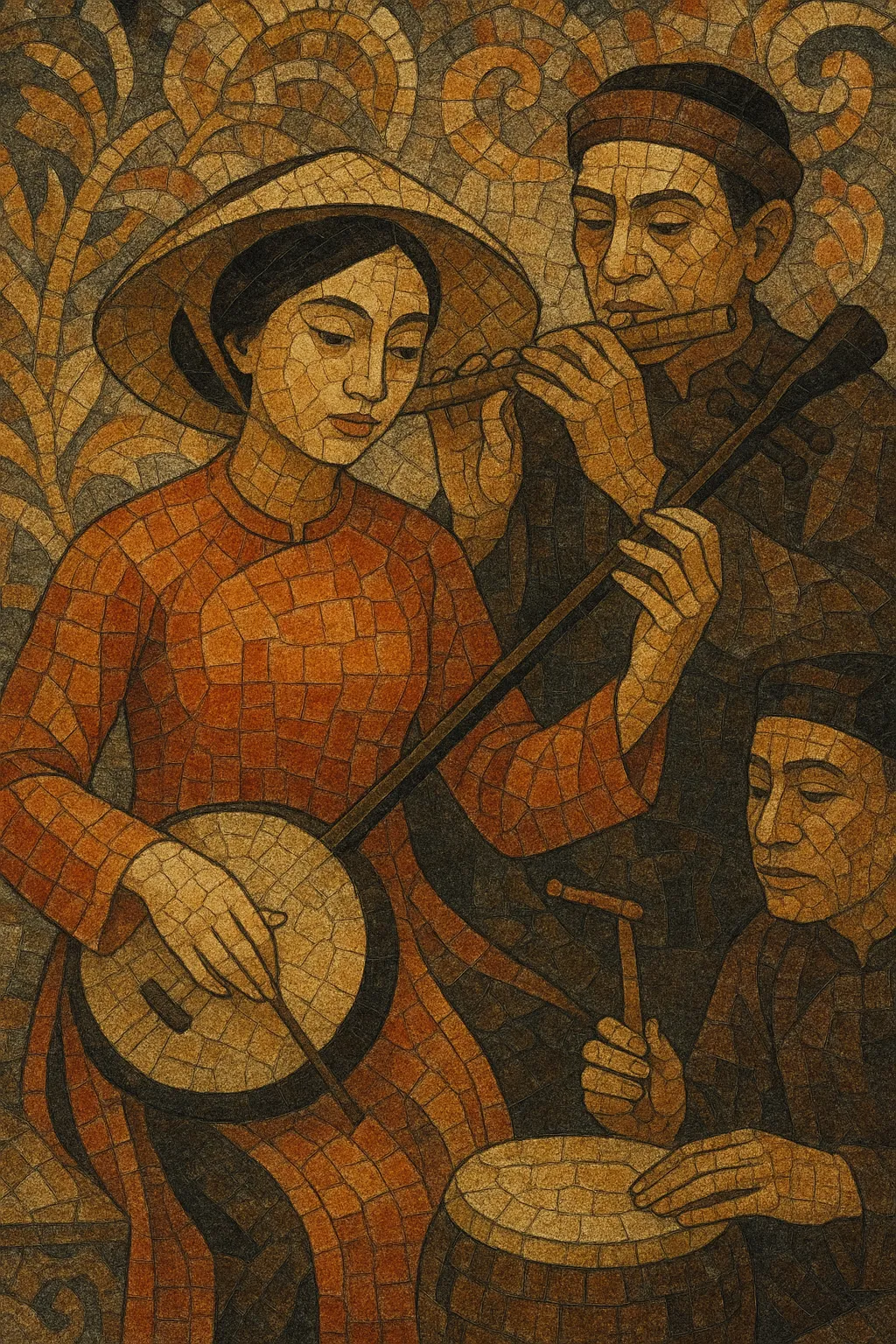Vietnamese classical refers to the refined, courtly and scholarly traditions of Vietnam’s pre-modern music, encompassing imperial court repertoires (Nhã nhạc), chamber genres (such as ca trù), and ritual/ceremonial practices.
It is characterized by pentatonic-based modal systems with nuanced ornamentation, heterophonic textures among plucked zithers and lutes, expressive solo winds (notably the đàn bầu monochord and sáo trúc bamboo flute), and cyclical percussion patterns. Vocal lines are highly ornamented, setting literary texts (in Hán and Nôm poetry) with subtle rhythmic freedom over measured accompaniment.
The center of court practice historically lay in Huế, where dynastic patronage codified repertories for ceremonies, processions, and dance. Parallel scholarly and urban traditions thrived in the north, with ca trù’s intimate trio (female vocalist, đàn đáy lute, and phách woodblock/trống chầu praise drum) exemplifying lyrical sophistication.
Vietnamese classical music took shape under sustained court patronage, especially from the 15th century onward. While elite musical culture existed earlier in Đại Việt, the Lê dynasty and later Nguyễn dynasty codified imperial repertoires collectively known as Nhã nhạc ("elegant music"). These practices absorbed and localized East Asian court aesthetics—particularly Chinese yayue—while integrating indigenous Vietnamese sensibilities, instruments, and ritual needs.
Alongside court ceremony, literati and urban chamber genres—most prominently ca trù—flourished. They paired refined modal practice (điệu Bắc/Nam and related hơi) with complex prosody and ornamented singing of classical poetry. Heterophony among zithers, lutes, and winds supported flexible, text-driven rhythm, while small percussion (phách, trống chầu) articulated cycles and performance cues.
The 19th century Nguyễn court in Huế centralized ensembles, dance suites, and processional music. Colonial modernity and war in the 20th century disrupted hereditary lines and patronage. Yet conservatories, radio, and scholarly work preserved core repertoires and instrument craft, and artists adapted classical idioms to new mediums and stages.
In the 21st century, UNESCO recognitions catalyzed revival and transmission: Nhã nhạc (2003) and ca trù (2009) were inscribed on UNESCO lists. Institutions in Huế and Hanoi, master-disciple lineages, and independent ensembles have renewed training, documentation, and performance, while contemporary virtuosi present classical instruments and aesthetics on international stages.
Today, Vietnamese classical survives as both living heritage and a platform for innovation. Court ensembles reconstruct ceremony and dance; ca trù clubs mentor young singers; and soloists explore new works and collaborations while preserving the idiomatic ornamentation, modal nuance, and refined poetics that define the tradition.


